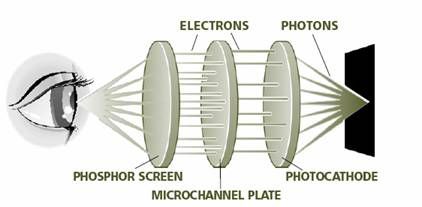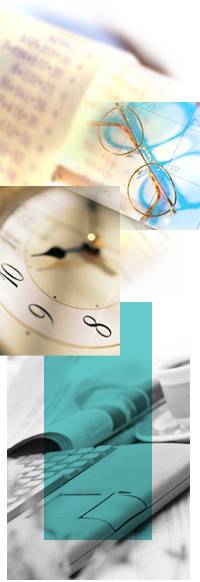|
Click here for printable version
By Lieutenant Raymond E. Foster, LAPD (ret.), MPA
The Trend Continues
The previous article determined that terrorists around the globe target police
officers. Indeed, preliminary figures from 2005 may indicate a continuing and perhaps growing trend in the violence against
law enforcement. According to the National Memorial Institute for the Prevention of Terrorism (MIPT), Terrorism Knowledge
Base (TKB), as of August 14, 2005, world-wide, there have been 554 terrorist attacks targeting police officers. These attacks
resulted in 2,546 injuries and 1,327 fatalities.
Preliminary information should be viewed with caution because the data includes
all persons wounded or killed as a result of the incident. It is very likely that when just police officer casualties are
considered the number significantly decrease. Also, most of the increase in attacks is taking place in Iraqi. While the violence
in Iraqi is instructive it may be causing an anomaly in the overall trend in incidents against police officers. The most definitive
deduction from the latest data simply reinforces the idea that terrorists target law enforcement officials and that this trend
may be increasing.
The focus of the last article was an effort to determine the weapon and nature
of the attack and then look for tactics that may help counter terrorism. In this article, we will look at several technologies
that can be combined with tactics in order to form a basis for counter-terrorism in the street.
Firearms Remain the Greatest Threat
|
Short videos from the National Institute for Justice (NIJ) Justice Information
Technology Network (JUSTNET)
Soft body armor "Bullet Resistance Testing"

Real Video
Windows Media
"Surviving a Shooting: Your Guide to Personal Body Armor"

Real Video Windows Media
|
|
|
In the previous article firearms were found to be the most prevalent weapon used
against police officers. In 2004, Firearms were used in 35% of the attacks against police officers and resulted in 34% of
the fatalities and 16% of the injuries. The greatest technological edge we have over firearms remains body armor. Body armor
can roughly be divided up into two categories - Ballistic Resistant; and, Stab and/or Puncture Resistant. It is important
to know that ballistic resistant body armor may or may not be puncture resistant, and vice versa. Most soft body armor is
made of layers of material that disperse the energy from a bullet. To illustrate this, take a piece of paper, hold it taunt
and lightly tap a sharpened pencil against it. You will soon make a hole in the paper. Take another piece of paper, hold it
taunt and now lightly tap the eraser end against it. You will notice that the paper can take a lot more tapping from the eraser
than the sharpened end. This is because the energy from your tapping the eraser is dispersed over a wider area than the sharpened
end. The sharpened end focuses the energy and penetrates the paper.
Body armor is a technology that can protect you if the means of the terrorist
attack is a firearm. For instance, body armor is essential technology to counter ambushes, attacks during enforcement operations
and attacks on police stations. Your soft body armor is designed to disperse the energy and therefore lessen the likelihood
of penetration. The National Law Enforcement and Corrections Technology Center (NLECTC) is a program sponsored by the National
Institute for Justice (NIJ) that has done significant testing on body armor for police officers (and corrections) personnel.
The NIJ has a searchable database about body armor specifications and a frequently asked questions section that may help you
in choosing the appropriate armor.
The Body Armor Safety Initiative from
JUSTNET
Secondary Devices and Preplanned Operations
Soft body armor is not good protection against shrapnel. However, soft body armor
is often supplemented with trauma plates which may provide some protection against the shrapnel produced by an explosion.
Trauma plates do not disperse energy as much as they deflect energy. A trauma plate over your chest makes sense in a gunfight
because you are likely to be facing your opponent, but in an explosion there is no way to predict your direction and therefore
the protection offered by the plate.
If you are responding to an explosion or some preplanned operation, the donning
of additional protection from a tactical vest and helmet can increase your protection. Some police officers carry a secondary
tactical vest which is much heavier because it contains body armor designed to deflect more than disperse and can be somewhat
more effective in protecting you from an explosion. Additionally, some officers have military style helmet (typically made
of KevlarŪ). Simply put, when you face circumstances wherein you know the threat level has increased you should increase your
level of personal protection.
Terrorists plan their operations. They spend time conducting reconnaissance and
determining the best location to strike. If they use a secondary device it is a good bet they spent time thinking about your
obvious command post locations and ingress and egress routes. In other words, a secondary device is likely to be placed where
it will do the most harm. Moreover, a secondary device is often remotely detonated because the terrorists want to maximize
the affect of the blast.
The remote detonation of a secondary device can be done through a Radio Frequency
(RF) signal (like a garage door opener) or with a cellular telephone. Because RF has a limited range and is subject to interference
cellular telephones have become the most common devices. The use of your radio and in-car data terminal should be limited
because there is a slight chance they will detonate a device (through their RF signal).
There is also technology available that can jam incoming cellular telephone signals.
Essentially, cellular telephone signals are jammed by the device taking up all of the available signals from a cell site,
preventing incoming calls and, therefore detonation. While the technology is relatively inexpensive, creating a "dead-zone"
around the site of an explosion or a preplanned operation has the downside of also blocking your communication. If you agency
relies on cellular telephone technology (either the conventional hand-held telephone or for transmission of data to your vehicle)
it will also be interrupted.
Technology and Station Defense
There a few technological changes to a police station that can make it a less
attractive target. Many police stations have a main lobby for visitors and desk officers. If the lobby entrance is designed
so that people on the outside can look directly into the lobby, either a partition or at the very least, dark window tinting
should be installed. Police officers working the desk are at a disadvantage because they are often distracted by visitors,
report writing, the telephones and even the watch commander. Preventing people from being able to directly observe the desk
officers from outside the lobby will enhance the desk officer's safety. Moreover, just as ballistic panels are being installed
in the doors of police vehicles, similar panels or material can be used to construct the desk behind which officers work.
Closed Circuit Television (CCTV) is becoming a popular deterrent as well as investigative
tool. Police managers should consider the installation of CCTV on the perimeter of the police facility. Again, terrorists
are planners. They conduct reconnaissance, look for weaknesses and make alternative target selections. CCTV is a relatively
inexpensive technology that can increase deterrence and the likelihood of preventing an attack perhaps by capturing images
of people making an obvious reconnaissance.
Ambush Prevention Technology
One of the first tactics learned in the streets is how to approach calls-for-service.
For instance, nearly everyone was trained to "listen before you knock," especially on disturbance calls. Even on routine calls
police officers should approach the door to a location and wait a few seconds before they knock. We do this because we want
to gather intelligence on what we might face behind the closed door. If you hear the sounds of arguing at a location, or perhaps
a number of voices, you are gathering intelligence that can help you prepare. Another tactic that allows the gathering of
information before handling a call is to wait down the street and observe the activity around the location. Often, we try
to do this surreptitiously, just as when you are listening at the door. Unfortunately, most of our calls-for-service occur
at night when our vision is impaired by darkness.
JUSTNET video: "Thermal Imaging" Real Video Windows Media
The use of night vision equipment is becoming more common place in law enforcement.
There are two basic types, thermal imagining and light intensification. For street level use, light intensification is probably
the best option because thermal imagining essentially sees heat, whereas light intensification allows you to see all available
light. Think of a license plate. With thermal imaging you are less likely to be able to view the plate because of a lack of
heat emission. Whereas with light intensification, you will probably be able to read the license plate number.
 |
|
Artwork provided by ITT Industries, Inc. |
Light intensification devices collect all available light (even near-infrared)
and pass it through a photocathode tube where it is converted into electrons. As electrons pass through the microchannel plate
they are multiplied thousands of times. The multiplied electrons strike the phosphor screen in the exact image pattern allowing
the police officer to see a bright image even in very low-light situations.
With this type of technology readily available in the field, a police officer
would be able to take a tactical pause prior to responding directly to a call-for-service. Just as you now listen before you
knock, you can now look before you go.
Conclusion
Looking at terrorism around the world has provided us with insight into potential
counter-terrorism tactics and technologies for the street police officer. The good news is that all of the tactics and technology
can be incorporated into our daily activities as police officers very likely improving overall officer safety. Our next article
in this series will look at the National Response Plan as it relates to first
responders.
|
